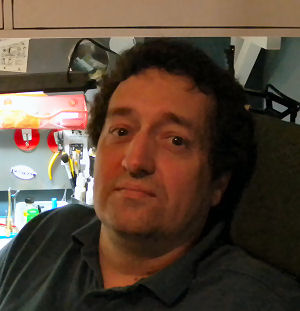1⁄35Bringing The Ammo - Panzer I Munitionsschlepper
1
Comment
After my review of the Tristar Panzer I Munitionsschlepper, I thought it was time to build this fine model. As I reported in the review, it is a very well-engineered kit, going together with a minimum of fuss, and is loaded with detail. So let’s get building.
Interior and deck construction
I guess the only place to start would be Step 1, dealing with the great interior that Tristar provide in the kit. The gearbox fits together precisely, as do the rest of the internal details. I found the instructions a little vague when dealing with the fit of part J-7, but a little dry run finally determined the position. At this stage the gearbox and seat were left out of the interior, for ease of painting. After the interior the instructions deal with the running gear, which I skipped and instead moved on to the engine compartment; again the fit of parts here was very exact. The only issue I found was that the instructions show parts I-33 and I-34 mounting to the engine block, but they actually mount to the headers, parts I-15 and I-16. It is best to mount I-15 and I-16 to the engine block first, then mount I-34 and I-35 to them. Again, I completed the hull-mounted detail in the engine compartment, but left the engine out for ease of painting. When installing the fenders, make sure you dry fit all the parts, including the rear upper hull deck. Also, when removing the molded grilles on the rear, for replacement by the PE parts, I found it easier to drill holes around the perimeter, then cut out and sand.Interior paint
With all the interior parts glued in place, including those to the upper hull (Step 8), it was time to paint. The interior was given a coat of Tamiya Fine Primer to start. Once the primer was dry, I painted the fuel tanks white and taped them off once dry. The rest of the interior was given a couple of light coats of Tamiya German Grey. Once all was dry, I removed the tape from the fuel tanks and began weathering the interior. This started with a wash of Mig Cold Steel to all the German Grey within the interior, then the floor was dry brushed with Vallejo Steel to show some wear. The Steel was also used to do a little chipping here and there. The seat was painted using Citadel Snake-Bite Leather and weathered with Mig Dark Wash, along with a little dry brushing. After some pin washes of thinned black oil paint, details were picked out with Vallejo paints. Some Vallejo Pigments were applied on the floor to represent dirt transferred from boots, and the interior was then sealed with Testor Flat Clear Spray. The engine and gearbox were spray painted with Tamiya Gun Metal before brush painting with thinned Vallejo Oily Steel. Details were again picked out, and then both were weathered with Mig Engine Grease. Once dry they were installed. Exhaust pipes were hand painted with Vallejo Steel, then brush painted with Testor Burnt Iron Metallizer; this works best when done with a soft brush. Exhausts on the exterior were then heavily rusted using oils and pigments.Comments
Hi Kevin,
Thanks for the review and the build article. I alwasy wondered what this kit was like and it looks preyy neat. Excellent job.
Cheers
Al
MAR 23, 2012 - 02:08 AM
Copyright ©2021 by Kevin Brant . Images and/or videos also by copyright holder unless otherwise noted. The views and opinions expressed herein are solely the views and opinions of the authors and/or contributors to this Web site and do not necessarily represent the views and/or opinions of Armorama, KitMaker Network, or Silver Star Enterrpises. All rights reserved. Originally published on: 2012-03-17 00:00:00. Unique Reads: 17314































